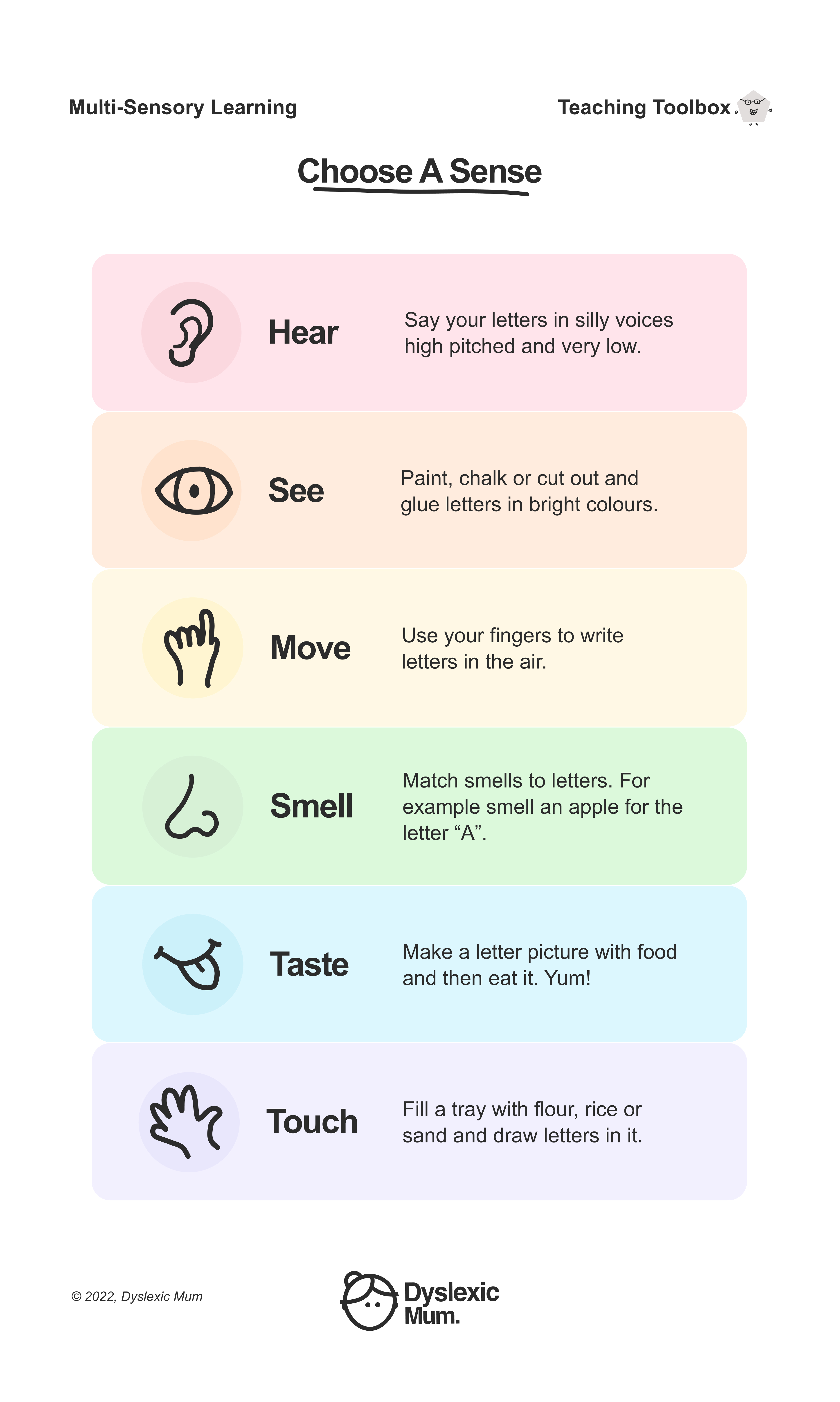Your basket is currently empty!
Learn how to help a dyslexic child by using ‘Multi-sensory learning‘ methods. This approach makes learning fun. It teaches the same information in various ways until the child understands. Multi-sensory learning uses the whole body to learn.
By hearing, seeing, moving, the dyslexic child is using all their senses to take in new information. A dyslexic child may find they learn better by using a certain sense. They may learn better by touch, for example by making a clay model of a word they are struggling to spell.
Multi-Sensory Learning Card


Multi-sensory dyslexia friendly learning
“It can feel sometimes, as a mum, that all my child does is play all day at school. I ask her what did you learn, she will answer, we painted and made things with cardboard. It can feel like she is not doing anything to learn how to read and write.
Watch this clickable video where the Dyslexic Mum explained multi-sensory learning and how it helps dyslexic children to learn.
When using the ‘Multi-sensory learning’ card above, follow these top tips.
- Get Creative – Use items at home to help your child learn. Spell words with teddy bears, cutlery, or pasta shapes.
- Favourite Sense – If your child has a favourite sense, plan activities around it. For example, if they like to taste, bake letter-shaped biscuits and spell words before eating.
- Rule of 10 – A dyslexic child may need up to 10 tries to learn something new. Plan 10 multi-sensory activities to teach a new word. Check the “Rule of 10 card” for ideas.
- Word Lists – Use multi-sensory methods to learn these “Word lists” of common words. If your child can read and write all the words on the lists, they will have a strong foundation in English.
Helpful blog posts
- Teach a dyslexic child to read and write
- Hard words for dyslexic children to read
- 8 Multi-sensory techniques for reading
- Quick facts multi-sensory learning
- Multi-sensory learning in classroom
Designed to help dyslexic children Mooki Cards. Complete with 56 cards and storage wallet. Perfect for using at home or in the classroom. Order your Mooki Cards here!

